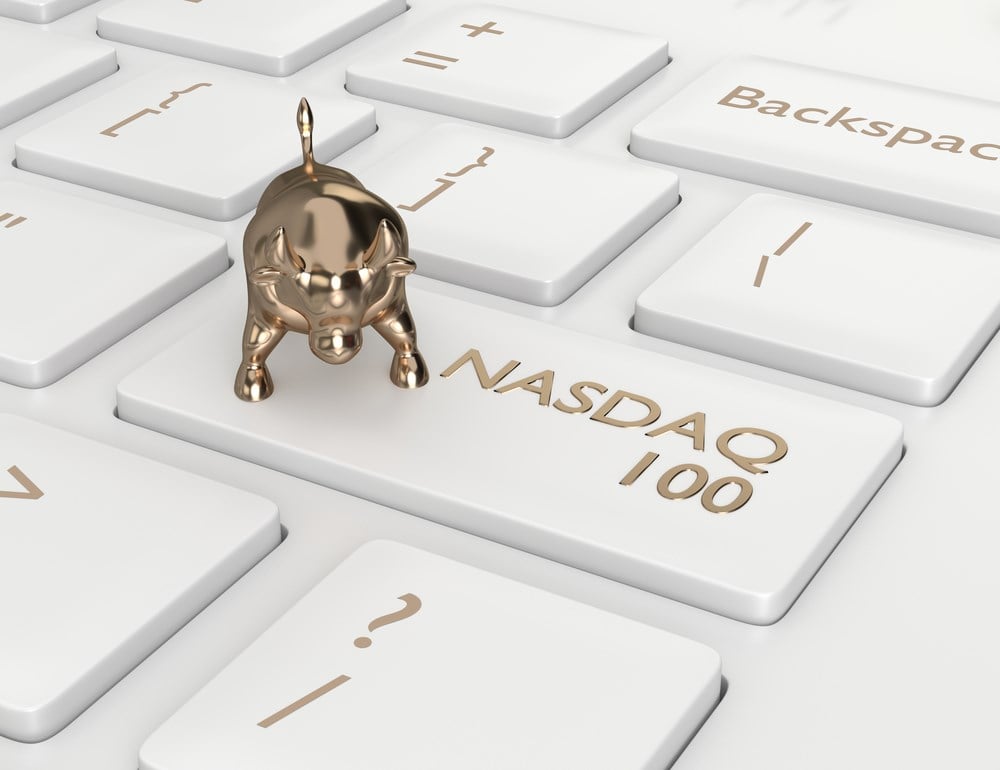
A simple yet logical investing strategy is to wholeheartedly embrace an index’s biggest losers for their collective rebound potential.
The most common example is buying shares of the 10 highest yielding Dow Jones Industrial Average companies after New Year’s Day. Often these stocks are also among the worst 12-month performers.
The dubious ‘Dogs of the Dow’ approach worked out quite well in 2022, eking out a positive return while the blue chip index (including dividend reinvestment) fell 7%. When Auld Lang Syne plays eight months from now, we’ll learn if Verizon, Intel and others helped the strategy work again.
Are there applications in other equity markets?
Let’s look at the popular Nasdaq-100 index. Buying an equally weighted basket of 2021’s worst performing Nasdaq-100 names would’ve generated a 2022 return of approximately -22%. By comparison, the index as a whole was down -33% last year. Big reversals in PDD Holdings, T-Mobile U.S. and Activision Blizzard drove the outperformance.
Entering 2023, the ‘Negatives of the Nasdaq’ included Meta Platforms, Tesla and Align Technologies, each of which plummeted more than 60% last year. So far so good. All three are among the Nasdaq-100’s top 10 year-to-date performers.
The strategy of rotating to the Nasdaq’s biggest laggards is far from foolproof but, like the Dogs of the Dow, it makes good sense. Given the volatility and growth potential associated with the Nasdaq’s elite, investors may want to keep these recent underperformers on the watch list.
Is the Enphase Energy Selloff an Opportunity?
It's been a rough Nasdaq-100 debut for Enphase Energy, Inc. (NASDAQ:ENPH) since it replaced Okta in November 2022. The solar technology stock has only trended lower, with last week’s drop the latest dagger. The company’s consensus-topping first quarter results were overshadowed by a soft Q2 sales outlook tied to weak domestic demand for its solar products.
Despite the stock being down more than 40% year-to-date, analysts still have faith in the world’s top supplier of solar microinverters and battery systems. This week, Credit Suisse became the latest to call Enphase Energy a buy, giving it a $260 price target that’s roughly in-line with consensus (and implies $100 upside). The firm acknowledged a near-term growth slowdown but said it expects demand to pick up once the summer months arrive and favorable regulations kick in for California property owners who install solar energy systems.
Why Should Investors Stay Bullish About Moderna?
After JD.com and Sirius XM, Moderna Inc. (NASDAQ:MRNA) is the Nasdaq-100’s third worst performer this year. The biotech stock continues to slide from its early pandemic peak of nearly $500 mainly because Covid-19 booster vaccine demand has all but evaporated, leaving the market to wait for the next breakthrough growth driver. Yet while many investors have chosen to move on, analysts remain patient.
Wall Street’s optimism is rooted in the fact that Moderna’s messenger RNA (mRNA) pipeline includes 45 vaccine and therapeutic candidates intended to treat a wide range of infectious diseases and cancer. The vast majority are in the clinical study phase including MRNA-4157, a potential melanoma therapy being developed with Merck. Last month, Moderna announced that the drug lowered the risk of recurrence or death by 44% in late-stage melanoma patients compared to Merck’s Keytruda.
Another reason to be bullish about Moderna long-term is that the company is getting in on the artificial intelligence craze. A recently announced partnership with IBM will explore the use of generative AI and quantum computing in mRNA science. The next-gen technologies have the potential to reshape future mRNA medicines by improving drug design and enhancing the drug discovery process.
Will Zscaler Shares Recover?
Zscaler, Inc. (NASDAQ:ZS) is trading near a 52-week low and nearly 80% off its November 2021 record high. The cybersecurity specialist has fallen woefully out of favor with the market amid concerns of weaker IT spending, heightened competition and valuation. While each are valid concerns, the negativity may already be baked into the share price — and then some.
Yes, the current macro environment is causing enterprises to limit spending on cloud security software. Over time, however, demand for cybersecurity solutions that meet businesses’ digital transformation needs should be the more lasting trend. Since Zscaler excels in privileged access security for cloud computing, its products should continue to see rising interest from banks, healthcare providers and several other data-sensitive industries as the decade progresses.
This week, Rosenblatt Securities started coverage of Zscaler with a buy rating and $135 target. Roughly two of three analysts have bullish positions and the consensus price target of $155 implies nearly 80% upside. Even the Street’s lowest price target (Morgan Stanley’s $120) suggests the stock is way oversold.
Can an 80% decline really turn into an 80% rebound? If so, Zscaler would be one of the Nasdaq-100’s biggest comeback stories of 2023-2024.
